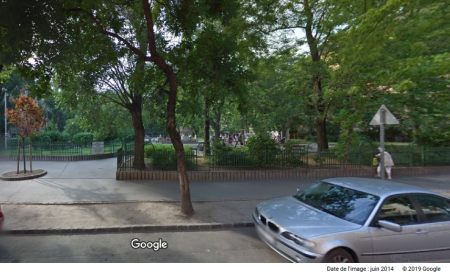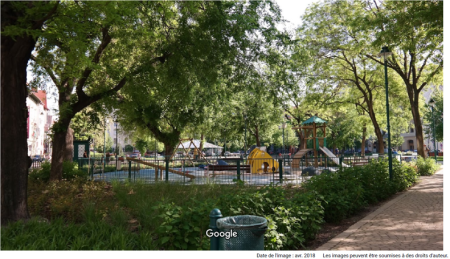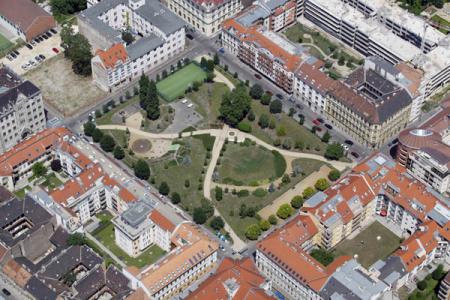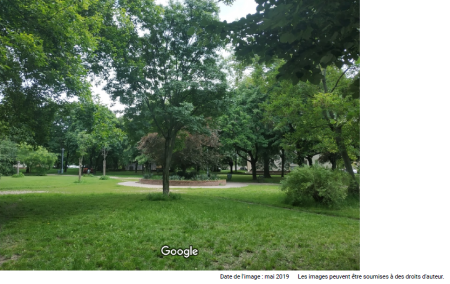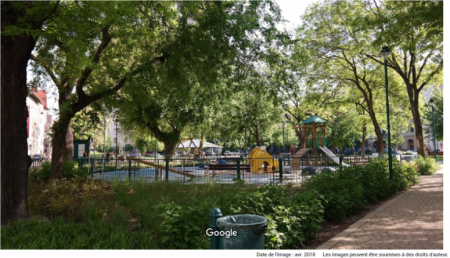
Area characterisation:
In the beginning of the 90's some urban planners started to think about the refurbishment of the area inFerencváros. This area lost role in city, because it started to turn into slum. The houses became obsolete and deteriorated. The population changed, and segregation of lower strata was typical. But this area was in the city centre, near the tubestation, near the most frequented tramline. The planners thought to involve a new concept for both the urban rehabilitation and the financing modell. They successfully could convinced the municipality about the new concept. The involvment of private investors was terribly new at that time in Hungary. It became a modell for further urban rehabilitation projects in Hungary. The founding of the FEV 09 Zrt. was also a part of the implementation process. This was the first company to be founded by a municipality for implementing urban rehabilitation projects. Later several more followed.
Scale of the project: neighbourhood
Scales impacts from this NbS action should be assessed: object (building, etc.), neighbourhood
Urban density in which the NbS is implemented: high (dense city center, etc.)
Objective:
- Complex development of a run-down part of the district (Refurbishment/ urban renewal)
The target area is located in the heart of Budapest. This pioneer project was realized before urban planners would have recognized the importance of urban green spaces. At the same time this project brought measurable market benefits (appreciation of occupied property), also helped to create a neighbourhood community. The project was a succesful tool in mitigating the negative effects of urban heat island, and summer air temperatures significantly decreased.
The project is also combined with another environmental friendly solution: Renewable energy system (solar panels, etc.)
Images
Financing:
Global (estimated) cost of the project: 200k€- 1M€
FINANCE MODEL:
Finance cluster: Technological
Finance model: Substitute with renewables and natural processes
Potential impacts/benefits:
Local population and citizens from other districts, who moved into the new flats, or those who work here. (For example MUTK also is located in one of the new buildings.) In this area there are many institutions, universities, theatres, hospitals too, therefore the customers of these buildings are beneficiaries of the project too.
Transferability of result:
Process enablers:
Knowledge drivers → Awareness → Climate change
Governance drivers → Process efficiencies → Action thinking approach
Forward -thinking and suistinable plan, PPP finance, good partners and finding the correct investors.
Process inhibitors:
Knowledge barriers → Lack of ready to apply scientific results
Finding the adequate partner, investor was really difficult. In this long time the local political leaderships and stakeholders were changing a lot. In this changing enviroment the project had to keep the initial targets. The urban planners played an important role, from whom the idea of implementation arrived.
BUSINESS MODEL:
Business cluster: Technological
Business model: Substitute with renewables and natural processes
Temporal perspective
Expected time for the NbS to become fully effective after its implementation: medium (between 2 to 5 years)
Feedback: The project has already been adapted to new requisites
Expected life time of the intervention: more than 30 years
State of progress of the project: Ongoing (not delivered yet)
Client:
the local municipality of Budapest (contracting authority)
Design team:
- FEV 09. Városfejlesztő Zrt. - Urban Development Corporation owned by the Municipality (Project manager)
Main partners:
- 09. District Muncipality of Budapest (Ferencvárosi Önkormányzat)
- citizens
Other stakeholders:
- Private capital- investors, city hall and FEK Zrt.
This was basically one of the first projects where participatory planning
was introduced in Hungary. Participatory planning tools were used in
several phases of the project with different circles of stakeholders.
GOVERNANCE MODEL:
Governance cluster:cluster2 new public management
It's a classical PPP project. FEV 09 has been coordinating the project for more than 20 years.
Contacts:
Attila , Vörös (ugyfelszolgalat@fevix.hu)
www.old.fevix.hu
Municipality or metropolitan service
Csarnok square 3. Budapest , 1093 Hungary
Awards:
The project received several different prizes of urban planning, and real estate development.
NBS goals:
- Enhancing sustainable urbanization
- Restoring ecosystems and their functions
- Developing climate change mitigation
- Developing climate change adaptation
- Improving risk management and resilience
- Urban regeneration through nature-based solutions
- Nature-based solutions for improving well-being in urban areas
- Increasing carbon sequestration through nature-based solutions
NBS benefits:
- Reduce load to sewer system
- Reducing temperature at meso or micro scale
- Carbon sequestration and storage
- Restoring ecosystems and their functions
- Greater ecological connectivity across urban regenerated sites
- Increase Biodiversity
- Increase quality and quantity of green and blue infrastructures
- Increased cultural richness and biodiversity
- Changing image of the urban environment
- Creation of green jobs relating to construction & maintenance of NBS
- Improve air quality
- Increase accessibility to green open spaces
- Increase well-being
Further information:
Nature4Cities (https://www.nature4cities.eu/) aims to develop a knowledge diffusion around Nature-Based Solution (NbS) and a decision support platform through new collaborative models.
This project is part of the Nature4Cities's pioneer case studies database, it will feed the observatory, NbS pre-selection and replication tools, gathered into the Geocluster4NBS.
This project was chosen as a pioneer case study for the following reasons: its implementation and and its business model. The area was problematic because of slum, varying population, old houses with poor conditions. The financing recourses were limited, the municipality had a lack of resources.
Nature4Cities project has received funding from the European Union’s Horizon 2020 research and innovation program under grant agreement No 730468.
